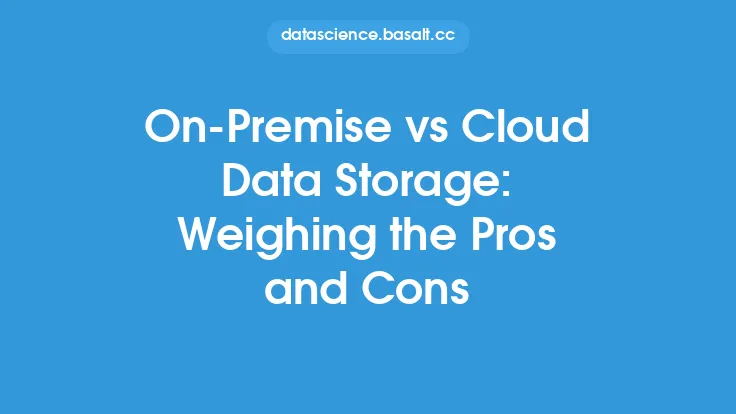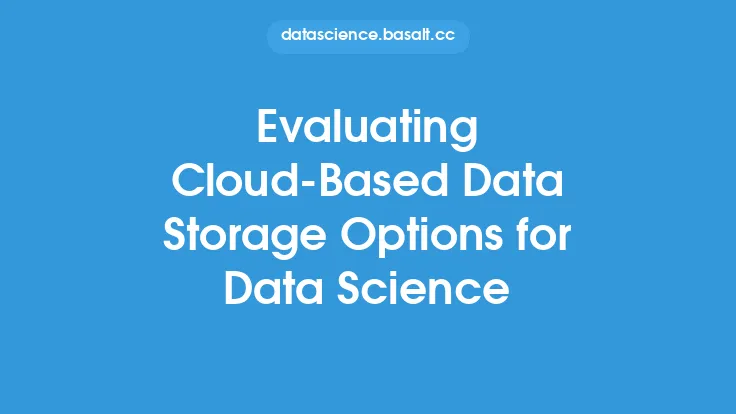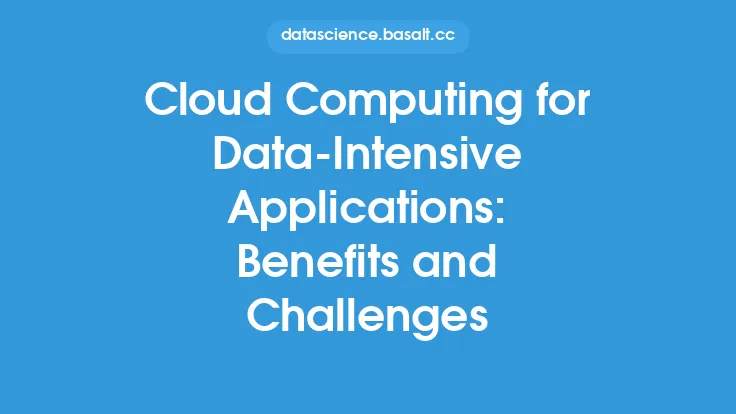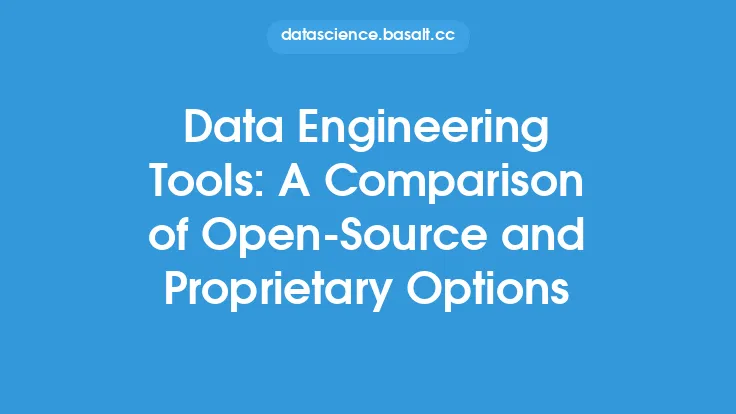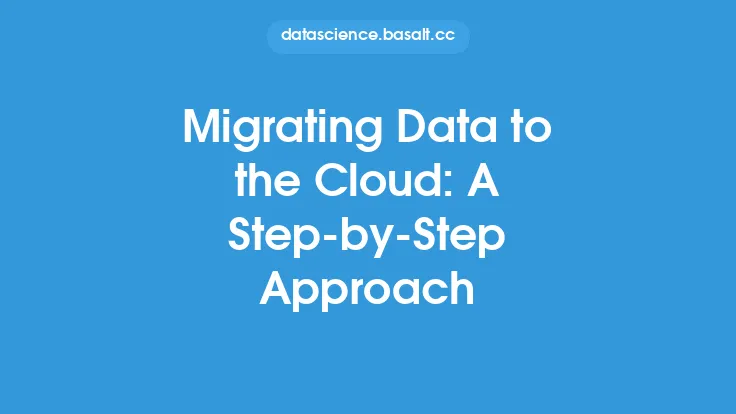When it comes to storing data, organizations have two primary options: on-premise storage and cloud storage. Both options have their own set of advantages and disadvantages, and the choice between them depends on the specific needs and requirements of the organization. In this article, we will delve into the details of on-premise and cloud storage, exploring their characteristics, benefits, and drawbacks, to help organizations make an informed decision about their data storage needs.
Introduction to On-Premise Storage
On-premise storage refers to the storage of data on physical devices or servers that are located within an organization's premises. This type of storage is also known as local storage or in-house storage. On-premise storage provides organizations with complete control over their data, as it is stored on their own servers and devices. This control allows organizations to manage and maintain their data storage infrastructure, ensuring that it meets their specific needs and requirements. On-premise storage is often preferred by organizations that require high levels of security, compliance, and data sovereignty.
Introduction to Cloud Storage
Cloud storage, on the other hand, refers to the storage of data on remote servers that are accessed over the internet. Cloud storage providers manage and maintain the storage infrastructure, allowing organizations to store and retrieve their data from anywhere, at any time. Cloud storage provides organizations with scalability, flexibility, and cost-effectiveness, as they only pay for the storage they use. Cloud storage is often preferred by organizations that require high levels of scalability, flexibility, and collaboration.
Key Differences Between On-Premise and Cloud Storage
One of the primary differences between on-premise and cloud storage is the level of control and management. With on-premise storage, organizations have complete control over their data storage infrastructure, whereas with cloud storage, the control is shared with the cloud storage provider. Another key difference is the scalability and flexibility of the two options. Cloud storage provides organizations with the ability to scale up or down as needed, whereas on-premise storage requires organizations to purchase and maintain their own hardware and infrastructure.
Security and Compliance Considerations
Security and compliance are critical considerations when it comes to data storage. On-premise storage provides organizations with complete control over their data security, as they can implement their own security measures and protocols. Cloud storage, on the other hand, relies on the security measures and protocols implemented by the cloud storage provider. However, most cloud storage providers have robust security measures in place, such as encryption, access controls, and monitoring. Compliance is also an important consideration, as organizations must ensure that their data storage solution meets relevant regulatory requirements.
Cost and ROI Considerations
The cost of on-premise and cloud storage varies significantly. On-premise storage requires organizations to purchase and maintain their own hardware and infrastructure, which can be a significant upfront cost. Cloud storage, on the other hand, provides organizations with a pay-as-you-go model, where they only pay for the storage they use. The return on investment (ROI) of on-premise and cloud storage also varies. On-premise storage can provide organizations with long-term cost savings, as they can reuse and repurpose their hardware and infrastructure. Cloud storage, on the other hand, provides organizations with short-term cost savings, as they can quickly scale up or down as needed.
Technical Considerations
From a technical perspective, on-premise and cloud storage have different requirements and considerations. On-premise storage requires organizations to have the necessary technical expertise and resources to manage and maintain their data storage infrastructure. Cloud storage, on the other hand, requires organizations to have a reliable internet connection and the necessary technical expertise to integrate their applications and systems with the cloud storage provider. Data migration and integration are also important technical considerations, as organizations must ensure that their data is properly migrated and integrated with their existing systems and applications.
Use Cases and Scenarios
On-premise and cloud storage are suited for different use cases and scenarios. On-premise storage is often preferred by organizations that require high levels of security, compliance, and data sovereignty, such as financial institutions, government agencies, and healthcare organizations. Cloud storage, on the other hand, is often preferred by organizations that require high levels of scalability, flexibility, and collaboration, such as software development companies, marketing agencies, and e-commerce businesses. Hybrid storage solutions, which combine on-premise and cloud storage, are also becoming increasingly popular, as they provide organizations with the best of both worlds.
Best Practices and Recommendations
When it comes to choosing between on-premise and cloud storage, organizations should consider their specific needs and requirements. They should assess their data storage needs, security and compliance requirements, and technical expertise and resources. They should also evaluate the costs and ROI of on-premise and cloud storage, as well as the scalability and flexibility of each option. Ultimately, the choice between on-premise and cloud storage depends on the specific needs and requirements of the organization. By considering these factors and following best practices and recommendations, organizations can make an informed decision about their data storage needs and ensure that their data is properly stored, managed, and protected.
